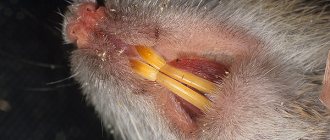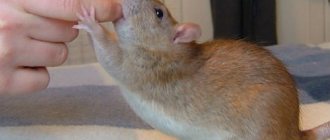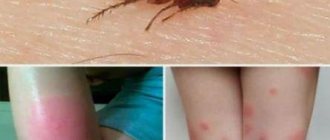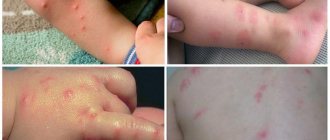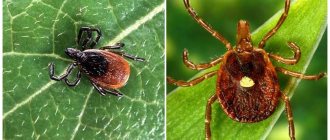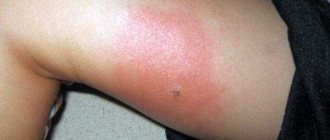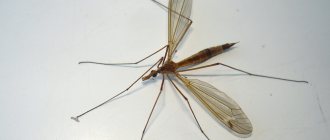Around 100,000 rat attacks on people are recorded annually around the world. Moreover, according to official statistics, only one rat bite out of 36 becomes known to health authorities and is included in these very statistics. That is, in fact, every year up to 3.5 million people around the world become victims of rat attacks, a significant part of which are children.
Perhaps the first thing to keep in mind is that if you or your child are bitten by a rat, there is no need to panic: it is not fatal, and the likelihood that a bite will cause infection with a dangerous disease, although possible, is very small. In addition, with the help of fairly simple actions, the risk of developing undesirable consequences after a rat bite can be minimized - we will talk about this in more detail below.
On a note
However, even without infection of the wound, a rat can cause serious injury with its sharp teeth. There are cases when these animals bit off a piece of a person’s ear and even broke a finger (crack in the bone). And in especially impressionable victims, a sudden rat attack can cause the development of phobias and various nervous disorders that can accompany a person for years, sometimes for the rest of his life. This is especially true for children.
So, let's see what needs to be done immediately if a rat bites, that is, literally in the first minutes after the rodent attack - the possible consequences of the bite largely depend on how correctly and quickly the appropriate actions are taken...
First actions after a rat bite
The first thing to do after a rat bite is to wash the wound with water and treat it with any highly effective antiseptic. To do this, you can use, for example, an alcohol solution of iodine, brilliant green, hydrogen peroxide, Miramistin or Chlorhexidine.
Since rats often bite until they bleed, and the wound can be quite deep, treatment should be carried out without waiting for the bleeding to stop. The wound should be treated carefully, including even minor scratches - this will be reliable protection against infection. After this, it is useful to bandage the bite site for at least a few hours to prevent mechanical damage to the wound and contamination from the outside (if this is not done, the risk of wound suppuration in the future increases).
On a note
If a rat has bitten a small child, he must first be calmed down. You can joke, remember a cartoon character, tell what kind of hero the baby has now become. It is also useful to shift the emphasis and say that the animal was afraid of the big boy (girl) and therefore bit. Otherwise, the child will believe that all rats are aggressive and very dangerous, and this is a direct road to a phobia.
Remember: the sooner the baby calms down and is distracted, the lower the risk of developing psychological consequences of the incident. And in the case of very impressionable adults (especially women), this step should not be ignored - without emergency psychological help, the bitten person may become hysterical and even faint.
In general, after a rat bite, you should not get hung up on thoughts about possible dangers and infections. Although the popular belief is that rat saliva is a broth with microbes and viruses, in reality, disease infections from rodent bites occur rarely, mainly in conditions of total unsanitary conditions in third world countries.
Meanwhile, although the bite most likely will not have any serious consequences, it is nevertheless worth monitoring the condition of the wound, and at the first sign of a complication, consult a doctor. Moreover, the most dangerous consequences of rat bites do not develop immediately, but several days (or even weeks) after the animal’s attack, when the wound has already completely healed.
On a note
Special studies have shown that even if you do nothing after a rat bite to disinfect the wound, the risk of contracting an infectious disease during an animal attack does not exceed 2%. Even after simply washing the wound, opportunistic or pathogenic bacteria were found in it only in 30% of cases, of which in 43% of cases these bacteria were staphylococci, which normally do not pose a health hazard and are always found on the surface of the human body. Treating a bite with an antiseptic can destroy almost all bacteria in damaged tissues. In other words, if you do simple but timely treatment of the wound, this will almost completely eliminate the risk of infection from a rat bite.
Still, it is useful to know what consequences rat bites can sometimes cause. If you are aware, you will be able to figure out what to do in a particular situation...
First aid measures
If you are bitten by a rat, do not panic. A simple procedure must be followed to minimize the risk of blood poisoning. If a rat bites your finger, remove all rings from it so as not to impede blood circulation.
Washing
First of all, the wound must be washed with a soap solution and running water in a soap to water ratio of 1:4. You can't try to stop the bleeding right away.
Peroxide treatment
After washing, the damaged area must be treated with hydrogen peroxide or other antiseptics for disinfection (Furacilin, Chlorhexidine, etc.)
Iodine
Apply iodine or brilliant green to the wound, which will help disinfect the wound.
Applying a sterile dressing
To prevent external bacteria from entering the gap, it is necessary to apply a sterile bandage or bandage pre-treated with oxolinic ointment. If you don’t have one, you can limit yourself to just a sterile bandage.
Possible consequences of rat bites
As noted above, a rat bite is dangerous, primarily due to the risk of contracting infectious diseases. Such infections are rare, but the infections themselves can be quite serious (and deaths after infection are a good enough reason to closely monitor the condition of the victim).
A rat bite itself can cause the following diseases:
- Sodoku, which is called “rat bite disease.” According to statistics, if sodoku is not treated, then in approximately 10% of cases it leads to the death of the patient. However, if therapy is started on time, a person is cured quickly and completely;
- Tetanus is a dangerous disease that requires the most intensive therapy. Every year, from 30 to 60 thousand people die from it around the world, mostly children, and the mortality rate is very high - about 20-25%. According to this indicator, tetanus is among the three most deadly infectious diseases after rabies and pneumonic plague. Complications of this disease are also dangerous - cardiac paralysis, pneumonia, sepsis. Tetanus develops extremely rarely from rat bites, but the risk is present;
- Leptospirosis is transmitted from rats more often than other infections, and the susceptibility of people to its pathogen is very high. The disease is severe and in half of the cases requires treatment in intensive care units. Among its complications are paralysis, myocarditis, acute renal failure, infectious-toxic shock;
- Pseudotuberculosis (yersiniosis), the main danger of which is the possible development of complications - meningitis, polyarthritis, osteomyelitis and myocarditis.
It is also useful to read: Why are rats dangerous to people and what diseases do they carry?
But it is almost impossible to become infected with rabies from a rat bite. There are literally only a few such cases known, and in each of them it was impossible to reliably state that the infection occurred specifically from rodents.
It is worth considering that opportunistic bacteria can get into the wound itself, which sometimes leads to inflammation and suppuration. If the victim is shown to a doctor, this situation is not dangerous: the abscess can be opened and drained, and then its cavity can be disinfected.
Such ulcers pose a threat if they are neglected - they can develop into ulcers (especially in hot and humid climates), abscesses and gangrene. And these consequences, in turn, are fraught with blood poisoning or the need for limb amputation. Today this happens extremely rarely.
In addition, it is important to understand the following pattern: if a rat bites a person, it means that it lives next to him. And the fact of such proximity is often no less dangerous than the bite itself. Most infections from rats are transmitted through the nutritional route - through soiled and contaminated food, water, and household items. And even if infection does not occur during a bite, it can happen at any other moment, when a person does not see or hear the rodent, but eats, for example, bread that the pest has already undermined at night. Moreover, infections from rats are transmitted in this way much more often than directly through bites.
On a note
It is because of the proximity of rats that several hundred million people have died in the entire history of human civilization - more than in the bloodiest wars combined. Animals simply physically could not have eaten so many people, but the fleas living in the fur of rats could (it was these blood-sucking parasites that infected people with the plague). And today all these problems have not gone away: several thousand people die from the plague every year in the world, and besides it, fleas carry typhoid, anthrax and other diseases from rats.
Another danger is the injury itself from the bite. It would seem that it is unlikely that an animal weighing about 100-200 grams can seriously injure a person. It turns out it can. For example, there are widely known cases of rats biting off the earlobes of sleeping people, gnawing the skin on the heels to the flesh, and biting through the wings of the nose. Moreover, such injuries occur more often in children than in adults.
Here are the dry statistics:
- 62% of rat bites are simply small wounds;
- 14% of bites are lacerations up to 1 cm long;
- 12% - abrasions;
- 6% - bruises under the skin;
- 5% - hematomas;
- less than 1% - fractures (finger fractures were recorded).
The photo below shows an example of a rat bite:
And in this photo there is an ear with a scar after an animal attack:
In practice, in most cases, rats bite people on the hands, less often on the legs, and even less often on the face. This confirms the fact that most often rats do not bite without a reason, but use their teeth only for self-defense when they are trying to catch them.
A rat can also bite a sleeping person. In slums and poverty-stricken areas of cities in developing countries, most attacks by these animals involve bites of sleeping people. In developed countries, the number of rat attacks on sleeping people is very low.
This is interesting
As mentioned above, rat bites can have psychological consequences. In addition to just the fear of rats, there are also specific phobias - for example, it is widely known that rats can enter an apartment through the toilet, getting into it from the sewer system through a water seal (in megacities such a trick is not uncommon). Accordingly, the appearance of a rat in the toilet in the future often causes an insurmountable fear of the toilet in a person.
What symptoms indicate infection?
There is a whole set of characteristic signs, upon the appearance of which a person bitten by a rat should be shown to a doctor as soon as possible.
The most common diseases that occur a few days (weeks) after rat bites are manifested by a typical fever with characteristic symptoms:
- Increased body temperature;
- Chills;
- Severe malaise and general weakness;
- Pain in the head;
- Digestive disorders, diarrhea, nausea, abdominal pain.
These are signs of most viral and bacterial fevers, leptospirosis and pseudotuberculosis. As a rule, they develop approximately a week or two after the bite, but sometimes the incubation period drags on up to a month, or, conversely, lasts only literally a few hours or a day. This, by the way, is one of the difficulties of diagnosis - often by the time symptoms appear, a person has already forgotten that he was bitten by a rat.
Here, for example, are the characteristic signs of tetanus:
- Acute pain at the site of the bite, even if the bite itself has long since healed (several weeks after the rat attack);
- Muscle twitching at the site of the bite;
- Tension of the chewing muscles, sometimes not allowing you to open your mouth at all;
- Insomnia;
- Excruciating back pain.
With sodoku, in addition to pain, an infiltrate with constantly leaking fluid may develop at the site of the wound. With a nonspecific local infection, a painful inflammation first appears here, and then a characteristic abscess.
It is also useful to read: Black rats: photographs and interesting facts about the life of these rodents
In general, there is no need to remember these symptoms. Any disturbance in the general health of the victim in the weeks following the rat attack is likely to be related to the bite itself. Moreover, the first “bell” can be not only a generalized sign, but also local manifestations - pain, itching, spontaneous muscle contractions near the wound, even if it has healed. None of them should be ignored, and if symptoms are obvious, you should see a doctor as soon as possible.
Treatment
If the bite leads to rabies, the victim needs emergency vaccination. Now they are given not in the stomach (30 injections), but in the shoulder - 5-6 vaccinations. The first must be done on the day of the attack.
Subsequent ones - on days 3, 7, 14, 30 and 90. If you complete a full course of vaccination, then even after a person is bitten by a rabid rat, he can save his life.
Bites localized to the head or face are especially dangerous . If the wound is too deep, you will need to administer antibacterial agents and use drainage. Or you have to get stitches.
Differences between rat bites and bites of other animals
In some cases, it is not even clear who exactly bit the person - a rat, a mouse, or some other animal. For example, a bite can occur when a person is sleeping, or someone bites a child on the finger while he is playing in the house or on the street. It is even more difficult to identify the offender if the person who was bitten was a pet.
In general, it is not difficult to distinguish a rat bite from the bite of another animal. After a rodent attack, as a rule, two small bleeding wounds remain at the site of the bite - from the upper and lower incisors (sometimes such wounds are represented by two nearby skin lesions, since the rat has two well-developed upper and two lower incisors). This “pattern” is characteristic of rodent bites.
The photo below shows what a rat bite looks like on a person’s hand:
Perhaps the easiest way to confuse such a bite with the bites of other rat relatives: mice, voles, hamsters. The rat differs from them only in size (however, there is no need to make such a diagnosis, since all wild rodents are about as dangerous as rats).
Tularemia vaccine: for whom
Usually, a vaccine against a disease is given to the population in an area of frequent infection with a given disease. Children from 7 years of age can receive the tularemia vaccine. After the first injection, the next vaccination of the body against tularemia is possible only after 5 years.
The vaccine contains strains of weakened tularemia bacteria. When a mild infection enters the blood, the immune system begins to build a natural protective barrier. It persists over subsequent years.
In some conditions of the body, it is better to cancel or postpone vaccination against the disease:
- problems with the immune system;
- temporary ill health - acute respiratory infections, flu and others;
- presence of immunity to tularemia;
- blood diseases;
- tumor-like neoplasms in tissues;
- connective fiber diseases;
- dermatological problems, various types of allergies;
- individual situations and so on.
We suggest you read: How to protect insulation from rodents
Are bites from rats and animals in pet stores dangerous?
Bites from domestic (decorative) rats are practically not dangerous. The risk of contracting an infection is minimal here, because ornamental animals are usually healthy and are not carriers of pathogens. And tame pets do not bite as violently as wild rats, and therefore the wounds left by them are rarely deep (usually the animal does not even bite through the skin).
However, if a decorative rat bites until it bleeds, suppuration of the wound can still occur, and therefore the bite must be fully treated in any case.
Likewise, if a rat bites a child in a pet store, the wound must be disinfected - for example, lubricated with iodine and bandaged. You don't need to do anything else. This is certainly not a reason to kill the animal and take its corpse for examination, since rats in pet stores are usually healthy (rabies, which parents usually start to worry about, is out of the question here).
Who is at risk of infection
The disease is quite dangerous. The main manifestations are:
- increased body temperature up to 40 degrees;
- weakness, fatigue and lethargy haunt the patient;
- some manifestations are similar to poisoning - diarrhea, vomiting, loss of appetite;
- inflammation of the lymphatic system - swelling and enlargement of nodes;
- after a while, the site of infection and the bite begins to tear;
- when the lesion is ripe, thick pus comes out of it.
These are not all the signs, because tularemia is quite mixed in symptoms when a new disease is added against the background of tularemia. It happens that a person becomes infected with pulmonary tularemia. Its symptoms are very similar to pneumonia, but not quite. The separation of sputum with pus signals tularemia.
Specific professions, such as agronomists, agricultural workers, people living in rural areas. For example, contact with contaminated soil, water, as well as contact with rodents, handling animal carcasses, tick bites, etc. are the most common cases of infection.
Tularemia is a disease quite dangerous for human life. Therefore, there is a way to protect yourself from infection with its pathogen. Vaccination is one of the best ways to prevent the disease.
What to do if rats bite children in kindergarten?
In many cases, rat bites require not only therapeutic but also administrative measures. Still, in accordance with sanitary standards, there should be no rats, mice, or any other rodents in the premises next to a person. And if in his home a person himself is responsible for preventing their occurrence, then in various educational institutions it is quite possible to demand compliance with these measures from the administration.
For example, if rats bite children in a kindergarten, there is a flagrant violation of sanitary standards. What should be done if the kindergarten administration did nothing in response to such an emergency?
- Compile and send an application to the regional SES office. The service usually responds promptly to complaints regarding municipal enterprises;
- Send an appeal to the deputy head of the city administration;
- If there is no response from the deputy head and the SES, write a complaint to Rospotrebnadzor.
It is very important that all complaints and appeals be collective, from at least three to four parents. This will help employees of the relevant services to distinguish the real problem from the far-fetched complaints of some scandalous mother.
It is advisable to attach to all requests copies of certificates from the clinic where the bitten children were examined by a doctor, as well as photographs and copies of letters to other authorities from which no response was received.
Rodent control products
There are many repellent devices, and the operating principle is based on ultrasonic and electromagnetic waves. Such devices do not kill rodents, but force them to leave the room by affecting the nervous system. What types of repellers exist and what are the differences in operation:
- Electronic repellers. The essence of these devices is to distribute magnetic pulses through an electrical wire, which is a powerful irritant for rats and mice. The range of these repellers is enough to cover the entire area of the room.
- Ultrasonic repellers. These devices act on the nervous system of rodents with high-frequency sound vibrations with changing frequencies, due to which the rats do not have time to get used to the ultrasound and quickly flee.
- Combined repellers. These devices combine a dual effect on pests: high frequency sound and low range of electromagnetic waves. This variable component does not allow rodents to adapt.
The choice of a specific repellent device depends on a number of factors: the number of rats and mice, the area of residence, the level of human comfort, etc. Each device has a different radius of influence, so choosing a repeller for a specific case will not be difficult. Their undoubted advantage is that they quickly drive rodents out of the house.
If a rat bites your pet...
Adult pets usually do not require first aid after a rat bite. Cats and dogs will diligently lick the bite site themselves, and their saliva is not much less effective an antiseptic than iodine or brilliant green.
The wound of a kitten or puppy that does not yet know how to lick itself, but has already been weaned from its mother, needs to be seriously treated. In this case, the baby needs to be given the same first aid as a bitten person: wash the wound, treat it with an antiseptic and, if possible, bandage it. The same measures must be taken if a rat has bitten a cat or dog on the nose or ear - parts of the body that animals cannot fully lick (well, perhaps you can do without bandaging).
If your pet develops symptoms after being bitten, you should contact your veterinarian as soon as possible. In particular, sometimes the pet exhibits spasms of the spinal muscles, disturbances in gait, he cannot open his mouth and chew food normally - in such cases, a doctor should be called immediately. These are the symptoms that tetanus manifests itself, and when they appear, time is literally counted by the clock. You should not decide on your own what to do in such a situation, much less use medications at your own discretion.
Useful video: what to do if you are bitten by a rat (first aid)
Prevention and precautions
To prevent rat bites, you must take the following precautions:
- it is forbidden to touch rats (even dead ones brought by cats);
- Do not visit rodent habitats (basements, underground sewers, cellars, landfills, construction sites);
- Be careful near fields and ponds;
- You should not pet an aggressive pet rat. A rodent can be calmed by splashing cold water on the animal;
- a pet rat requires vaccination and regular veterinary examination;
- If you cannot avoid meeting a rat, you should not provoke it to attack (try to make contact, drive it into a corner, move sharply).
A rat bite is a serious reason to seek medical attention. But even a professional doctor will not be able to help a person if treatment is delayed. Therefore, you definitely need to know what to do when attacked by rodents and how to provide first aid.
